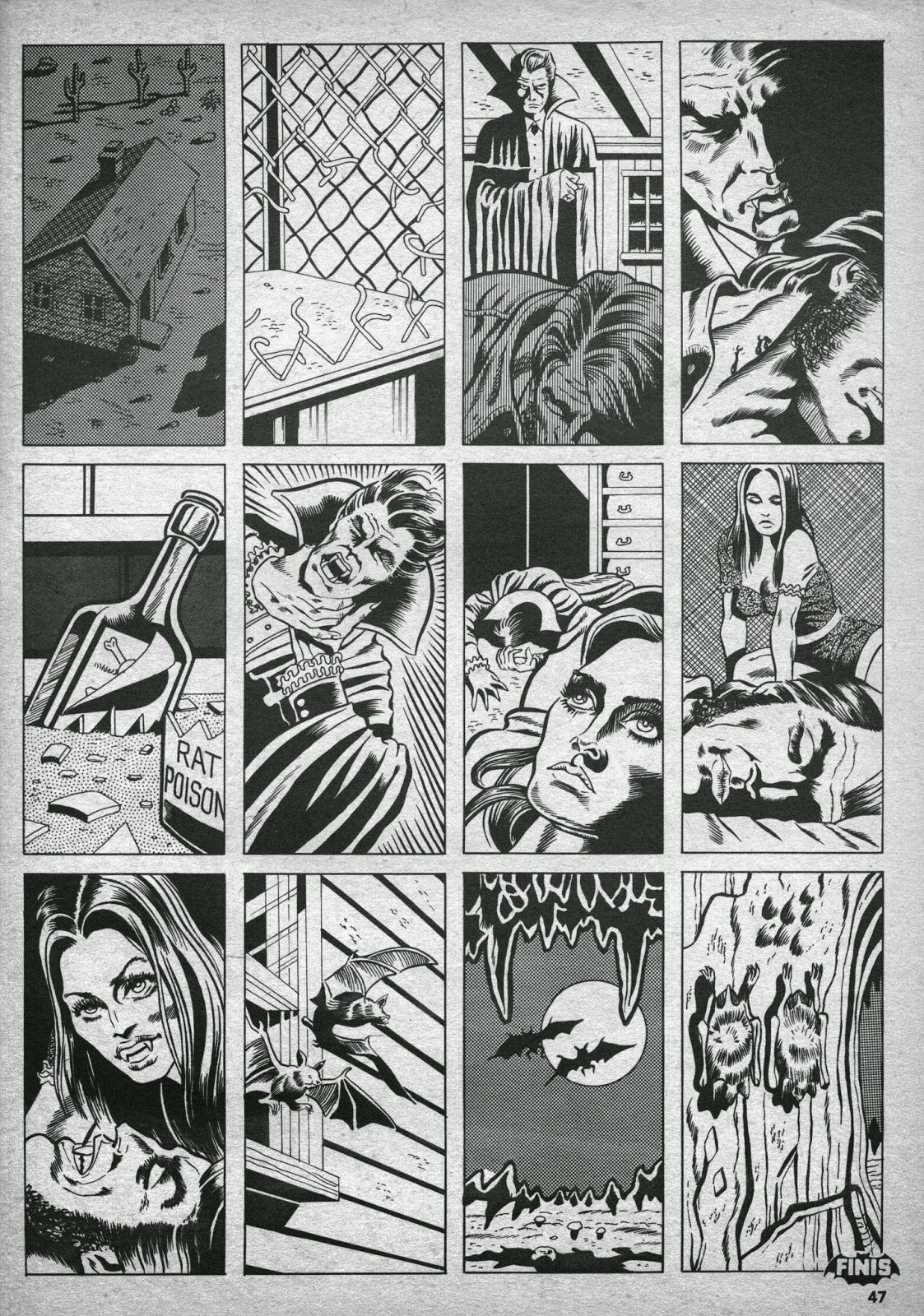DC Comics, 2011
[Starting in December, 2013, Dynamite Entertainment - the comics company perhaps best known for its Deja Thoris, Red Sonja, and Vampirella ultra-cheesecake comics - was the latest owner of the comic book rights to the franchise, and has released color comics with writing by Chris Roberson and artwork by Bilquis Evely.]
What you do get in this Showcase volume are 450 pages containing all eight of the Curtis issues, including the cover art and pinups. [The other, non-comic art features that appeared in the magazines are not included, however].
Note that these comics were all originally printed in black and white, and they reproduce very well here (even though the book uses the cheaper grade of `phone book' quality paper).
It's the artwork, by John Buscema, Tony DeZuniga, Val Mayerik, and later Ernie Chan, that makes this volume well worth getting, as it remains among the best the franchise has seen, and among the best Marvel issued in the 70s in its magazine format.
If you are a fan of 70s comic books, Doc Savage, or just well-illustrated comics, period, then getting a copy of this 'Showcase Presents' volume is necessary. Copies in 'very fine' condition can be had for $20 or less, but I expect that the longer the volume stays out of print, the higher the prices will go, so it may be best to act quickly......
Probably the best of all of these Doc Savage comic book incarnations are the eight issues Marvel released in 1975 - 1977 in black and white, magazine-size format, under its Curtis Circulation imprint.
These first of these issues of `Doc Savage' debuted in the Summer of 1975 as part of a tie-in with the movie. The movie of course bombed awfully, permanently scarring many Savage fans even unto the present day. Nonetheless, Stan Lee and Archie Goodwin kept the magazine going for seven more issues, into 1977.
Demonstrating the sometimes esoteric nature of licensing legalities, in 2011 DC - who owned the comic book rights to the franchise - compiled all the Curtis issues into this Showcase volume.
Needless to say the words `Curtis' or `Marvel' are not mentioned anywhere at all in this book, not even within the ISBN credits. Indeed, unless buyers know the history of the Doc Savage comics, they would be correct in presuming that all the material in this volume originated with DC....
What you do get in this Showcase volume are 450 pages containing all eight of the Curtis issues, including the cover art and pinups. [The other, non-comic art features that appeared in the magazines are not included, however].
Although the Curtis comics were technically magazines, and therefore exempt from adhering to the Comics Code, writer Doug Moench wasn't too adventurous with the series. His plots mimic those of the Lester Dent novels, featuring evil villains equipped with superweapons; damsels in distress; journeys to lost cities; jungles filled with giant insects and dinosaurs; etc. The Fabulous Five are active participants in all of the action, rather than being relegated to sidekicks making occasional appearances (Monk even starred in his own brief solo series !).
If you are a fan of 70s comic books, Doc Savage, or just well-illustrated comics, period, then getting a copy of this 'Showcase Presents' volume is necessary. Copies in 'very fine' condition can be had for $20 or less, but I expect that the longer the volume stays out of print, the higher the prices will go, so it may be best to act quickly......



























































































